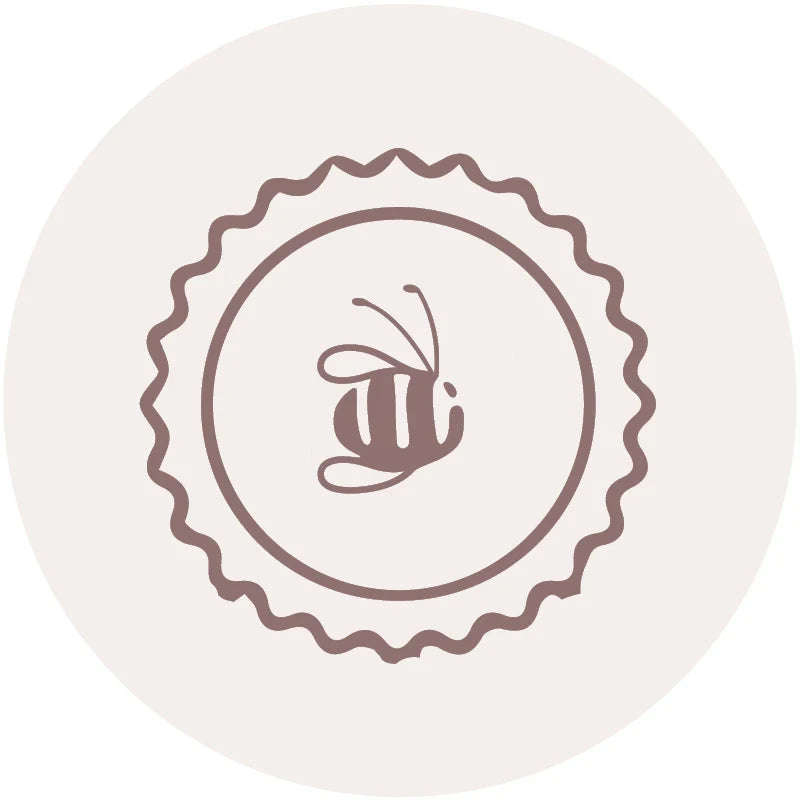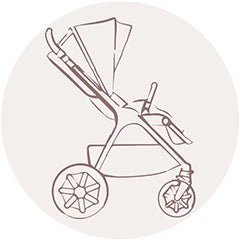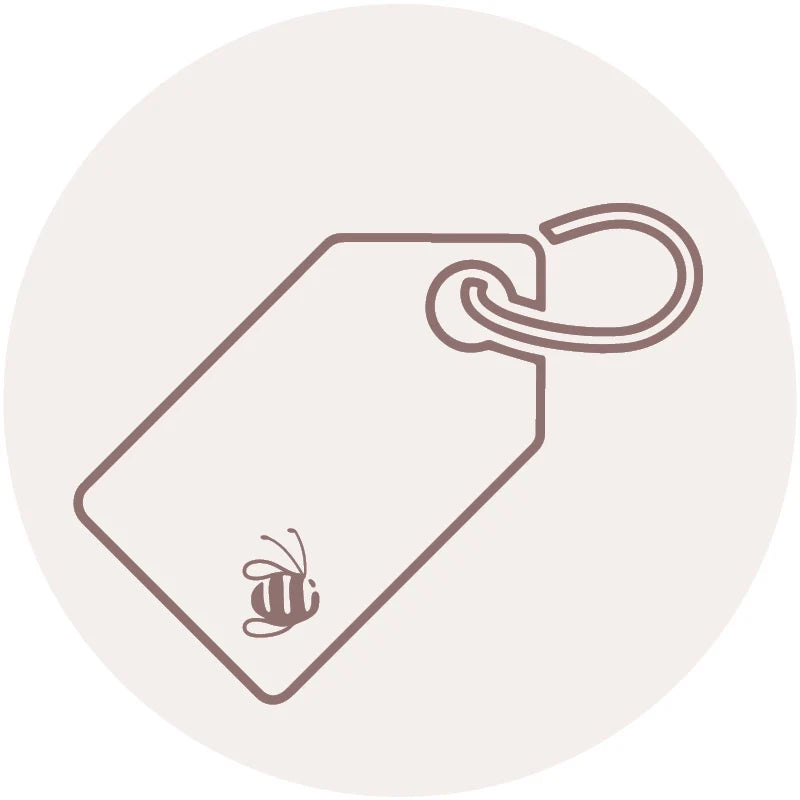Magnesium Rescue Standard
Magnesium Rescue Standard
SKU:NA-MRSTNDS50
Clothing Prem to 18 Months
| Size | Age Guide | Weight | Height |
|---|---|---|---|
| Premature | Premature or Small Newborn | Up to 4Kg | Up to 55cm |
| Newborn | 0-3 months | 4-6Kg | Up to 62cm |
| 3 Month | 3-6 months | 6-8Kg | Up to 68cm |
| 6 Month | 6-12 Month | 8-10Kg | Up to 76cm |
| 12 Month | 12-18 Month | 10-12Kg | Up to 84cm |
| 18 Month | 18-24 Month | 12-14Kg | Up to 92cm |
Clothing 2 to 6 Years
| Size | Age Guide | Height | Chest | Waist | Hip |
|---|---|---|---|---|---|
| 2 Year | 2-3 Years | Up to 100 cm | 56 | 51 | 58 |
| 3 Year | 3-4 Years | Up to 105 cm | 58 | 53 | 60 |
| 4 Year | 4-5 Years | Up to 110 cm | 60 | 55 | 62 |
| 5 Year | 5-6 Years | Up to 115 cm | 62 | 57 | 64 |
| 6 Year | 6-7 Years | Up to 120 cm | 64 | 59 | 66 |
Beanie Size Guide
| Size | Head Circumference | Age Guide |
|---|---|---|
| Premature | 31-35 cm | Premature or Small Newborn |
| Newborn | 35-40 cm | Newborn |
| Small | 40-43 cm | 3-6 Months |
| Medium | 43-47 cm | 6-18 Months |
| Large | 47-52 cm | 18-3 Years |
Sunhat Size Guide
| Size | Head Circumference | Age Guide |
|---|---|---|
| Newborn | 37-40 cm | Newborn |
| Small | 40-43 cm | 3-6 Months |
| Medium | 43-46 cm | 6-12 Months |
| Large | 46-49 cm | 12-24 Months |
| Xtra Large | 49-54 cm | 2-4 Years |
Sleep Pods Size Guide
| Size | Weight | Age Guide | Measurement(Back to Hem) |
|---|---|---|---|
| Newborn | 0-6 kgs | 0-3 Months | 60.5 cm |
| Small | 0-8 kgs | 3-6 Months | 66 cm |
Booties Size Guide
| Size | Age Guide |
|---|---|
| Newborn | 0-3 Months |
| Small | 3-6 Months |
| Medium | 6-12 Months |
| Large | 12-18 Months |
Pretty Brave Baby
| Foot Length (mm) | Insole Length (mm) | EU | UK | Age | INT |
|---|---|---|---|---|---|
| 95-104 | 110 | 16/17 | 2 | 0-6m | S |
| 104-114 | 118 | 18 | 3 | 6-12m | M |
| 114-123 | 127 | 19/20 | 4.5 | 12-18m | L |
| 123-137 | 142 | 21/22 | 5.5 | 16-22m | XL |
Pretty Brave 1st Walker
| Foot Length (mm) | Insole Length (mm) | EU | UK | Age |
|---|---|---|---|---|
| 114-120 | 125-128 | 19 | 3 | 1 yr |
| 120-126 | 132-135 | 20 | 3.5 | 1-2 yrs |
| 126-132 | 138.5-141.5 | 21 | 4.5 | 1-2 yrs |
| 132-138 | 145-148.5 | 22 | 5 | 2 yrs |
Crywolf Swim Nappy
| Size | Length (waist to crotch) | Crotch Width (side to side) |
|---|---|---|
| 0-1 yr | 1-2 yrs | |
| 37 | 38 | |
| 14.5 | 15.5 |
Crywolf Rash Suit
| Size | Length (back neck to crotch) | Chest (arm to arm) | Waist (side to side) | Sleeve (neck to cuff) | Neck Opening(diameter) |
|---|---|---|---|---|---|
| 6-12 Months | 1 yr | 2 yrs | 3 yrs | ||
| 40 | 42 | 44 | 46 | ||
| 25 | 26 | 27 | 28 | ||
| 24 | 25 | 26 | 27 | ||
| 30 | 31.5 | 33 | 34.5 | ||
| 13.25 | 13.25 | 13.8 | 14.3 |
In stock
Couldn't load pickup availability
Overview
Overview
This soothing Magnesium Butter is a gentle, effective way to support much needed sleep, especially for restless little ones, and it’s safe for pregnant women too.
Magnesium is a vital mineral known for its calming properties, helping to relax the nervous system by binding to GABA receptors, which can ease the body into a more restful state and support deeper, more restorative sleep.
Applied topically, this butter allows magnesium to absorb directly through the skin - bypassing the digestive system for faster, more effective results. It’s ideal for bedtime, helping to calm busy minds and tired bodies, while also relieving muscle cramps, tension, and growing pains.
Alongside promoting better sleep, magnesium plays an important role in mood regulation, digestion, and reducing inflammation. It also supports healthy bones, muscles, and immune function, making it a powerful all-rounder for growing children and expectant mums alike.
Please note: this is a butter, not a balm, and will melt in warm conditions. Store in a cool place to keep it solid, and simply chill to reset if it softens
Key Features
Key Features
Technical Specification
Technical Specification
User Guide
User Guide
Delivery and Returns
Delivery and Returns
- Delivery: Free within NZ on orders over $100 (excluding bulky items) or $8 standard shipping
- Returns: Accepted within 14 days of receipt with proof of purchase
- Some items are excluded from returns including sale items, hardware, car seats, prams, monitors and personal items - please click here for the full list.
Share this product
Recently Viewed Products
Related Blogs
Exercising while pregnant, yay or nay?
Should you exercise while pregnant? Optimise health for you and baby by keeping fit For the majority of women, pregnancy will mean being uncomfortable, one way or another. Research shows that energy expenditure during pregnancy is at the upper limit of what humans can maintain physically — it’s hard work. It’s no surprise that lots of women find it difficult to keep on exercising throughout this – especially when you already have kids running you ragged. But exercise is important for you and your baby’s health. The American College of Obstetricians and Gynecologists (ACOG) recommend that expectant mums try to complete half an hour of moderate exercise every single day. Is it safe to exercise during pregnancy? Yes. In general, if you were physically active before your pregnancy, you can continue exercising as long as it’s comfortable. But – and this is a big but – pregnancy is not the time to exercise for weight loss. Your goals should be about maintaining your fitness and keeping your muscles in tune, so you’re ready for birth and those early newborn days. Benefits of exercise when pregnant Even if the goal of 30 minutes a day seems unobtainable, try to do something. Here’s why it’ll be worth the effort. You’ll: Be comfier: exercise helps to minimise backaches, bloating, swelling and constipation Stay healthier: exercise can help prevent and control gestational diabetes Have more energy Feel happier Cope with the weight of that big belly better, with improved muscle tone and posture Get better sleep Have an easier time in labour Find it easier to regain your fitness after the baby is born How to exercises safely during pregnancy If you already have an exercise regime, you may not be able to complete it at the same intensity as before. That’s to be expected. Here, we have a variety of options for low-impact fitness. Swimming – Low to no-impact, swimming lets you exercise without feeling the added weight of baby. You’ll relieve stress on joints, alleviate nausea and sciatic pain, and help to reduce water retention. If you’re not a swimmer, try aqua jogging. Just be gentle on yourself and don’t jump or dive into the water. Your baby can’t handle the bubbles that are created inside when you change altitude underwater. Walking – Probably the easiest and cheapest form of exercise is walking. You can do this right up until your due date, you can go as quickly or slowly as you like, and you don’t need any special gear. If you have kids already, walking to the park is a great way to fit exercise into your busy schedule. Running – If you’re already a runner, it’s fine to continue during pregnancy. Whether it’s on a treadmill or outside, whatever you’re used to and feel comfortable doing is fine. However, just be aware that your ligaments and joints will loosen during your pregnancy, which can put you at risk of injury. Group fitness classes – Low-impact workouts are great, from Body Balance to Zumba. They pump your heart rate up, get the blood flowing, and make you feel great. However as your body changes, so does your center of gravity. This can make balancing difficult and jumping can be challenging. Ask the instructor for alternative moves that will accommodate your pregnancy. Excercycling – Using an exercycle is great during pregnancy. It’s low-impact, you can pedal with as much resistance as is comfortable, and with little risk of a fall. You can do spin classes if you tell your instructor you’re pregnant and avoid pressure and standing. Martial arts, kickboxing, pole dancing – If you have been doing these activities for a long time already, it’s fine to continue doing them for as long as it’s comfortable. Avoid impact/pressure to the stomach and stop if you feel uncomfortable. HIIT (High Intensity Interval Training) – This can be very intense, so it’s not something you should be trying for the first time during pregnancy. If you’ve been doing it for a while, make some modifications and you should be fine. Avoid jumping and high-impact moves, and use lower weights than normal. Be careful with anything that involves balancing, and stop if you feel short of breath or dizzy. Outdoor sports – Give skiing and snowboarding a miss, because a fall could be catastrophic. Things like ice skating and horseback riding may be fine for the first two trimesters, but once your balance is affected they may become difficult. Pilates, yoga and barre – These are ideal pregnancy exercises. The practitioner should be able to tailor them to suit your needs. Focus on your core, pelvic tilt and floor exercises, core strengthening and flexibility. Look for classes that can be adjusted for pregnant women, as these will require less balance, more breathing focus and appropriate strength exercises. Weightlifting – This is a great way to increase strength and tone. Use lighter weights for more reps and it may be more comfortable to use machines rather than free weights, to help control movements and limit injury. Exercises to avoid Most things are safe, as your baby is nestled in protective fluid in the amniotic sac. However you should avoid: High-impact exercise that you’re not used to Lying flat on your back, as this may put pressure on blood vessels and reduce blood flow Contact sports, such as rugby Skiing, snowboarding, ice hockey or gymnastics, where there is a high risk of falls Scuba diving, as the baby has no ability to avoid gas embolism Anything in high altitudes, as you are more at risk of altitude sickness Exercising in high temperatures, as you may overheat the baby Get moving, mama! If you’re pregnant, exercise is one of the best things you can do for your and your baby’s health. If you’re already active you can continue doing what feels comfortable, unless your sport of choice is high intensity or potentially harmful to baby. Do warmups and cool downs to give you time to adjust and take notice of how your body feels. Adapt exercises to lessen the impact on your body, but in general you can do what feels good. If unsure, please seek advice from your healthcare provider. Make sure you eat enough, drink enough water, and listen to your body. Give your baby the best possible growing environment and the best entry into this world.
Learn moreHealth Tips for Pregnant Mums
Written by Kylie Stowe www.nourishedclinic.co.nz My name is Kylie. I am a mum of four, a Nutrition & Health Coach, and a Mindfulness Teacher.Being a busy mum myself, I’m drawn to nutrition and wellbeing for mums – an area of health that is often undervalued. Over the coming months, I’m really excited to share some practical tips, recipes and personal experiences to help you navigate these beautiful, yet sometimes challenging, times. I’m thankful that the team here at Dimples saw the need to go beyond supplying beautiful baby goods to also nourish and care for our mums. Health Tips for Pregnant Mums Focus on whole, unprocessed, nourishing foods There is a lot of pressure on pregnant mums to eat the ‘perfect diet’. This can be incredibly confusing due to the overwhelming amount of conflicting information out there. You’re not alone if this has been a source of guilt – especially when morning sickness makes eating anything but iceblocks and dry crackers impossible. Just remember, you do what you have to do to get through those early months. Nutrient requirements during pregnancy are higher, and supporting a growing baby can often deplete your own stores. Building meals from whole, unprocessed foods is a great option, as they’re rich in essential nutrients. Heavily processed foods are often low in nutritional value – hence the term “empty calories”. Think: Good quality protein such as free-range or grass-fed meats, seafood, eggs, legumes, nuts, and seeds At least four serves of colourful vegetables and two serves of fruit Whole grains like quinoa, steel-cut oats or brown rice Pasteurised dairy (if tolerated) Healthy fats like extra virgin olive oil and avocado If morning sickness makes meals tricky, smoothies can be a great way to get nutrients in. My go-to was Nuzest’s Clean Lean Protein (a high-quality powder with no fillers), nut butter, banana, berries, greens and almond milk. Hydration is also important. Aim for two glasses of water on waking (we often wake dehydrated), and another two litres throughout the day. After the first trimester, 1–2 cups of pregnancy-safe tea (like Artemis Pregnancy Tea) can also be helpful. If nausea makes hydration hard, try small sips often. Diet alone can’t always meet every nutritional need – a good quality prenatal supplement containing folate, iodine, vitamin D and DHA is a smart addition. Always speak to your LMC or health professional about what’s right for you. Movement is also important – even just a walk outdoors. The fresh air and added vitamin D boost mood, support the immune system and help with joint and fitness health during pregnancy. There are also great prenatal fitness and yoga classes available – these are wonderful for connecting with other mums-to-be. Some of the mums I met through yoga have become lifelong friends and a valuable part of my motherhood support network. I always say: aim for progress, not perfection when it comes to health and nutrition. Recognising that this is an ongoing journey can ease the pressure of trying to get it “just right”. If you’d like to dive deeper into prenatal nutrition, I highly recommend dietitian Lily Nichols’ book Real Food for Pregnancy. It’s full of great information and recipes. Kylie Stowewww.nourishedclinic.co.nz
Learn moreBaby Comforters: What Are They, and How To Introduce Them
There’s something very special about watching your baby snuggle into their favourite little blanket or soft toy. For many little ones, a comforter (or blankie) becomes more than just a bedtime accessory - it’s a trusted friend that brings a sense of calm and reassurance through every new stage of growing up.
Learn moreNewborns & Sleep: What to Expect and Survival Tips
Bringing a new baby home is one of life’s most beautiful - and exhausting - adventures. In this blog, Family Sleep & Wellness Coach, Lauren Moran from Little Dreamers, shares her expert advice on newborn sleep in the fourth trimester.
Learn more












